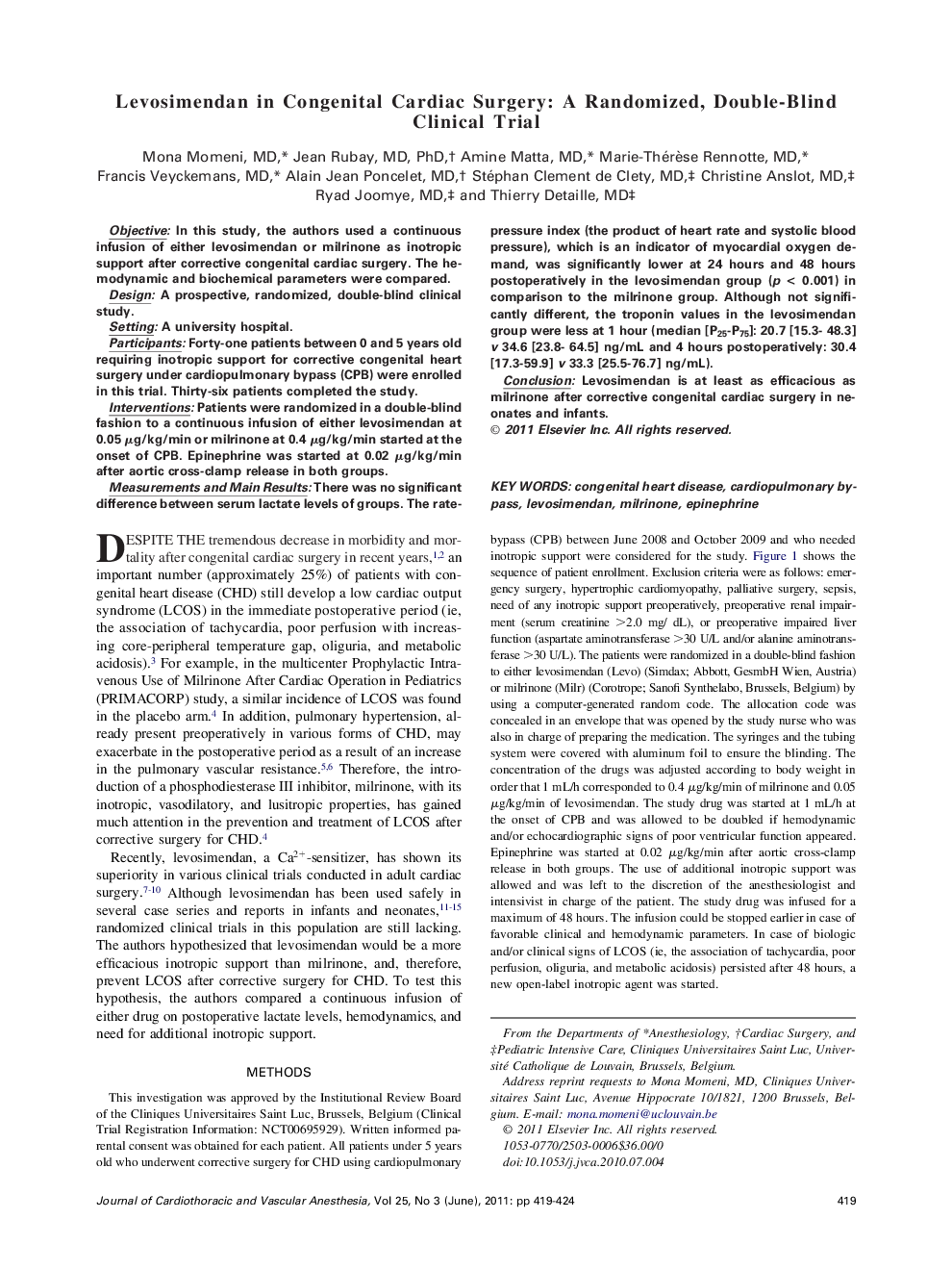| Article ID | Journal | Published Year | Pages | File Type |
|---|---|---|---|---|
| 2761156 | Journal of Cardiothoracic and Vascular Anesthesia | 2011 | 6 Pages |
ObjectiveIn this study, the authors used a continuous infusion of either levosimendan or milrinone as inotropic support after corrective congenital cardiac surgery. The hemodynamic and biochemical parameters were compared.DesignA prospective, randomized, double-blind clinical study.SettingA university hospital.ParticipantsForty-one patients between 0 and 5 years old requiring inotropic support for corrective congenital heart surgery under cardiopulmonary bypass (CPB) were enrolled in this trial. Thirty-six patients completed the study.InterventionsPatients were randomized in a double-blind fashion to a continuous infusion of either levosimendan at 0.05 μg/kg/min or milrinone at 0.4 μg/kg/min started at the onset of CPB. Epinephrine was started at 0.02 μg/kg/min after aortic cross-clamp release in both groups.Measurements and Main ResultsThere was no significant difference between serum lactate levels of groups. The rate-pressure index (the product of heart rate and systolic blood pressure), which is an indicator of myocardial oxygen demand, was significantly lower at 24 hours and 48 hours postoperatively in the levosimendan group (p < 0.001) in comparison to the milrinone group. Although not significantly different, the troponin values in the levosimendan group were less at 1 hour (median [P25-P75]: 20.7 [15.3- 48.3] v 34.6 [23.8- 64.5] ng/mL and 4 hours postoperatively: 30.4 [17.3-59.9] v 33.3 [25.5-76.7] ng/mL).ConclusionLevosimendan is at least as efficacious as milrinone after corrective congenital cardiac surgery in neonates and infants.
